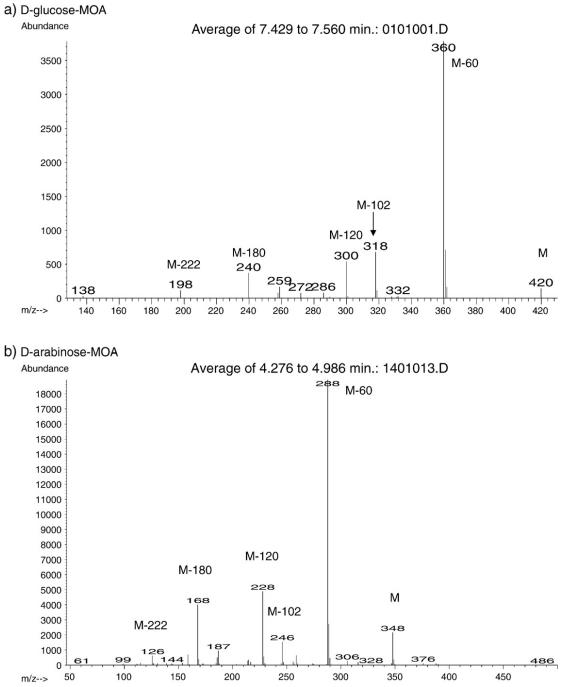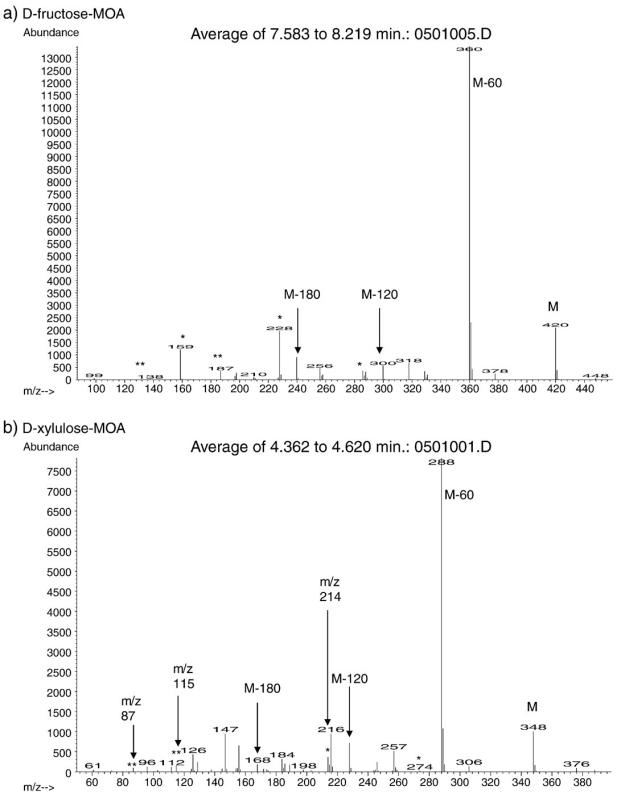- Service Details
- Case Study
- Description
What is Fructose?
Fructose, also known as fruit sugar, constitutes one of the main sources of energy that drives the metabolic processes of living organisms. It is one of the two key monosaccharides, along with glucose, that constitute sucrose- a critical carbohydrate. This versatile sugar molecule is not only the sweetest naturally occurring carbohydrate, but it also plays a vital role in metabolic processes because of its unique metabolic pathway. Due to the prevalent use of high-fructose corn syrup in processed foods and beverages, fructose intake has risen dramatically in recent years, sparking interest in its metabolic consequences.
The biological functions and effects of fructose make its comprehensive analysis an important field in the biosciences and food industry. Fructose analysis aids in gaining insights into the roles it plays in various metabolic pathways, fermentation processes, and disease mechanisms such as diabetes, obesity, and metabolic syndrome. For instance, the monitoring of fructose concentration in serum provides valuable diagnostic information in the medical field. Similarly, the food industry benefits from its accurate quantification to ensure food quality and labeling accuracy.
Fructose Analysis Services in Creative Proteomics
Fructose Identification: An essential first step in fructose analysis, identifying fructose in sample solutions to validate its presence.
Fructose Concentration Measurement: Understanding the fructose level is paramount in many areas like food production, pharmaceutical manufacturing, etc. Our services provide accurate quantitative analysis.
Fructose Metabolism Analysis: We assess fructose's metabolic pathways and systems to understand its functionality and interaction with other biological systems.
Fructose Kinetics Studies: Through studies of fructose kinetics, we delve into the dynamics of fructose absorption, distribution, metabolism, and excretion, casting light on inter-individual variations and the factors affecting these variations.
Technical Platforms for Fructose Analysis
High-Performance Liquid Chromatography (HPLC)
- Key Feature: Exceptional resolution and sensitivity. We utilize both normal-phase HPLC and reverse-phase HPLC according to the fructose's physical and chemical properties.
- Description: Fructose-containing samples are injected into a high-pressure liquid mobile phase, separating based on affinity and interaction kinetics within a column.
- Advantages: Provides precise quantification and identification using refractive index detector or UV-visible spectrophotometer.
Gas Chromatography-Mass Spectrometry (GC-MS)
- Key Feature: High specificity and sensitivity for volatile compounds.
- Description: Samples undergo vaporization and separation in a gas chromatography column, followed by ionization and fragmentation in the mass spectrometer.
- Advantages: Provides characteristic fingerprints of fructose, enabling precise identification and quantification.
- Applicability: Ideal for volatile or thermally stable compounds.
Liquid Chromatography-Mass Spectrometry (LC-MS)
- Key Feature: Comprehensive analysis combining liquid chromatography and mass spectrometry.
- Description: Samples chromatographically separated, followed by ionization and mass analysis.
- Advantages: Provides molecular weight information and fragmentation patterns for accurate quantification and structural elucidation.
Enzymatic Assays
- Key Feature: Rapid and specific Fructose Analysis.
- Description: Enzymes catalyze fructose conversion with detection of generated species.
- Advantages: Suitable for high-throughput screening and various sample matrices.
Nuclear Magnetic Resonance (NMR) Spectroscopy
- Key Feature: Non-destructive and informative analysis.
- Description: Samples subjected to a strong magnetic field, leading to nuclear spin alignment and excitation.
- Advantages: Provides insights into chemical shifts, coupling constants, and relaxation properties.
- Applicability: Enables precise quantification and structural elucidation.
Sample Requirements for Fructose Analysis
| Sample Type | Sample Volume | Additional Notes |
|---|---|---|
| Fruit Extracts | 1-2 mL | Ensure proper extraction techniques to avoid matrix effects |
| Blood Plasma | 100-200 µL | EDTA anticoagulant recommended for plasma collection |
| Tissue Homogenate | 20-50 mg | Homogenization buffers tailored for tissue preservation |
| Food Products | Varies | Consultation with experts for sample preparation guidance |
| Urine | 5-10 mL | Acidification may be required to stabilize fructose |
| Serum | 100-200 µL | Serum separator tubes preferred for sample collection |
| Cell Culture Media | 0.5-1 mL | Avoid contamination and ensure proper storage conditions |
| Biopsy Samples | 10-20 mg | Quick freezing in liquid nitrogen recommended for preservation |
Deliverables for Fructose Analysis
- A comprehensive report of the analysis, including method detailing, raw data, final results, and necessary interpretations.
- Free consultation on any queries regarding the report/analysis.
- Recommendations for future analysis if required.
Applications of Fructose Analysis
- Nutritional Assessment: Determine fructose content in foods and beverages for dietary planning.
- Metabolic Research: Investigate fructose metabolism's role in energy regulation and metabolic disorders.
- Food Industry: Ensure compliance with regulatory standards and enhance product quality control.
- Biomedical Studies: Explore fructose's implications in metabolic diseases and cancer research.
Title: Quantitative Analysis of Serum Glucose and Fructose Using GC/MS
Background
The study addresses the need for accurate and sensitive methods to analyze serum glucose and fructose levels due to their relevance in health and disease, particularly in the context of high-fructose diets and metabolic disorders like diabetes.
Samples
Clinical serum samples were obtained from patients being evaluated for diabetes control. These samples were processed to extract glucose and fructose for analysis.
Technical Methods
Derivatization: Aldoses and ketoses in the serum samples were derivatized into methoxime per-acetate (MOA) derivatives. This process involved reacting the aldehyde or ketone groups with hydroxylamine and acetic anhydride to form stable derivatives.
GC/MS Analysis: The MOA derivatives were subjected to gas chromatography-mass spectrometry (GC/MS) analysis. This method allowed for the separation and quantification of glucose and fructose based on their unique retention times and mass fragmentation patterns.
Comparison with Enzymatic Assays: The newly developed method was compared with commercially available enzymatic assays for serum fructose determination. The comparison revealed lower limits of detection and quantification for the MOA-based method, particularly beneficial in the presence of high glucose concentrations.
Results
Fragmentation Patterns: Analysis of fragmentation patterns under both electron impact (EI) and chemical ionization (CI) conditions provided valuable insights into the molecular structure of aldose-MOA and keto-MOA derivatives. Unique fragmentation products facilitated accurate quantification of glucose and fructose.
Clinical Samples Analysis: The developed method successfully measured serum glucose and fructose concentrations in clinical samples. Serum fructose levels were found to be in the micromolar range, even in samples with varying glucose concentrations, indicating its suitability for studying fructose metabolism in diabetic populations.
 Representative mass spectra (CI Mode) of aldoses-MOA
Representative mass spectra (CI Mode) of aldoses-MOA
 Representative of CI mass spectra of ketoses-MOA : (a) D-fructose-MOA and (b) D-xylulose-MOA.
Representative of CI mass spectra of ketoses-MOA : (a) D-fructose-MOA and (b) D-xylulose-MOA.
Reference
- Wahjudi, Paulin N., et al. "Measurement of glucose and fructose in clinical samples using gas chromatography/mass spectrometry." Clinical biochemistry 43.1-2 (2010): 198-207.
What is the process of metabolism of fructose?
The metabolism of fructose primarily occurs in the liver, where it undergoes phosphorylation by fructokinase, yielding fructose-1-phosphate. This step is distinct from glucose metabolism, where glucose is phosphorylated to glucose-6-phosphate by hexokinase. Fructose-1-phosphate is then cleaved into glyceraldehyde and dihydroxyacetone phosphate by the enzyme aldolase B. Subsequently, glyceraldehyde is phosphorylated to glyceraldehyde-3-phosphate by triokinase, entering the glycolytic pathway, while dihydroxyacetone phosphate is converted to glyceraldehyde-3-phosphate, thus merging with the same pathway.
The intermediates generated from fructose metabolism can enter various metabolic pathways, including glycolysis, gluconeogenesis, and lipid synthesis. Notably, fructose metabolism bypasses the rate-limiting step of phosphofructokinase in glycolysis, potentially leading to a more rapid conversion of fructose to energy intermediates compared to glucose.
How is fructose metabolized differently from glucose?
Fructose metabolism differs from glucose metabolism in several key aspects:
- Metabolic Fate: While both fructose and glucose can be utilized for energy production, their metabolic fates vary. Fructose is primarily metabolized in the liver, whereas glucose can be metabolized in various tissues throughout the body.
- Rate of Metabolism: Fructose metabolism bypasses the rate-limiting step of phosphofructokinase in glycolysis, potentially leading to a quicker conversion to energy intermediates compared to glucose.
- Effects on Insulin: Unlike glucose, fructose metabolism does not stimulate insulin secretion significantly. This difference may have implications for metabolic health, as excessive fructose consumption has been associated with insulin resistance and metabolic syndrome.
Which reagent is used to distinguish between glucose and fructose?
One commonly used reagent to distinguish between glucose and fructose is Benedict's solution. Benedict's solution contains copper sulfate, sodium citrate, and sodium carbonate. When heated in the presence of reducing sugars such as glucose, fructose, and maltose, the copper ions in Benedict's solution are reduced, forming a brick-red precipitate of copper(I) oxide. However, fructose tends to give a more intense red precipitate compared to glucose when reacted with Benedict's solution, aiding in their differentiation.




